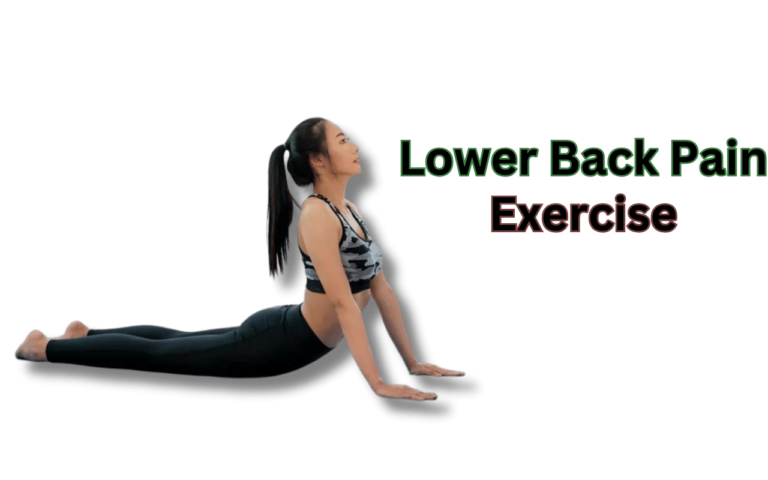Strength Training for Beginners: Tips and Techniques
Strength Training, also known as resistance training, is a form of exercise that focuses on improving muscular strength and endurance. It involves the use of resistance to induce muscular contraction, which builds strength, anaerobic endurance, and the size of skeletal muscles. For beginners, strength training can seem intimidating, but with the right knowledge and approach, it can be a rewarding and highly beneficial practice. This article provides tips and techniques to help beginners start their strength training journey safely and effectively.
Benefits of Strength Training
Before diving into the tips and techniques, it’s essential to understand the numerous benefits strength training offers:
- Improved Muscle Strength and Tone: Strength training helps increase muscle strength and endurance, making everyday activities easier and improving overall muscle tone.
- Enhanced Metabolic Rate: Building muscle mass increases your resting metabolic rate, helping you burn more calories even at rest.
- Bone Health: Strength training increases bone density, reducing the risk of osteoporosis and fractures.
- Joint Flexibility and Balance: It improves joint function and balance, reducing the risk of injuries and falls.
- Mental Health: Engaging in regular strength training can boost your mood, reduce anxiety, and improve mental health.
- Chronic Disease Management: Strength training can help manage or prevent chronic conditions like arthritis, heart disease, and type 2 diabetes.
Getting Started with Strength Training
1. Consult with a Professional
Before beginning any new exercise regimen, especially strength training, it’s advisable to consult with a healthcare provider or fitness professional. This is particularly important if you have any existing health conditions or concerns. A professional can help design a safe and effective program tailored to your needs. (Strength training program)
2. Set Realistic Goals
Establish clear, achievable goals for your strength training journey. Whether you aim to build muscle, lose weight, improve endurance, or enhance overall fitness, having specific goals can keep you motivated and focused. Start with small, attainable targets and gradually increase the difficulty as you progress.
3. Learn Proper Form and Technique
Proper form and technique are crucial to prevent injuries and maximize the effectiveness of your workouts. Consider working with a certified trainer, especially in the beginning, to learn the correct way to perform exercises. Watching instructional videos or attending a beginner’s class can also be beneficial.
4. Start with Bodyweight Exercises
For beginners, bodyweight exercises are an excellent starting point. These exercises do not require any equipment and can be performed anywhere. They help build foundational strength and prepare your body for more advanced resistance training. Some effective bodyweight exercises include:
- Push-Ups: Targets the chest, shoulders, and triceps.
- Squats: Engages the quads, hamstrings, glutes, and core.
- Planks: Strengthens the core, shoulders, and back.
- Lunges: Works the legs and glutes.
- Dips: Focuses on the triceps and chest.
5. Gradually Incorporate Weights
Once you are comfortable with bodyweight exercises, gradually incorporate weights into your routine. Start with light weights and focus on maintaining proper form. Free weights like dumbbells and kettlebells are versatile tools for strength training. Machines can also be useful, especially for isolating specific muscle groups.
Essential Strength Training Techniques
1. Progressive Overload
Progressive overload is a fundamental principle of strength training (weight lifts). It involves gradually increasing the resistance or intensity of your workouts to continuously challenge your muscles (Strength training exercises). This can be achieved by increasing the weight, the number of repetitions, or the difficulty of the exercises. Progressive overload is key to building strength and muscle mass over time.(lifting at home)
2. Compound Movements
Incorporate compound movements into your routine. These exercises work multiple muscle groups simultaneously, making your workouts more efficient and effective. Some essential compound exercises include:
- Deadlifts: Targets the back, glutes, hamstrings, and core.
- Bench Press: Works the chest, shoulders, and triceps.
- Pull-Ups/Chin-Ups: Engages the back, biceps, and shoulders.
- Rows: Focuses on the back and biceps.
- Overhead Press: Targets the shoulders and triceps.

3. Isolation Exercises
In addition to compound movements, incorporate isolation exercises to target specific muscles. These exercises are beneficial for addressing muscle imbalances and focusing on weaker areas. Examples include:
- Bicep Curls: Isolates the biceps.
- Tricep Extensions: Focuses on the triceps.
- Leg Curls: Targets the hamstrings.
- Calf Raises: Engages the calves.
- Lateral Raises: Works the shoulders.
4. Proper Warm-Up and Cool-Down
Always begin your strength training sessions with a proper warm-up. This increases blood flow to your muscles, enhances flexibility, and reduces the risk of injury. A good warm-up should include light cardio, such as jogging or jumping jacks, followed by dynamic stretches.
Similarly, cooling down after your workout is essential. It helps lower your heart rate gradually and reduces muscle soreness. Incorporate static stretching to improve flexibility and promote muscle recovery.
5. Adequate Rest and Recovery
Rest and recovery are crucial components of any strength training program. Muscles need time to repair and grow stronger after intense workouts. Ensure you get adequate sleep and schedule rest days between strength training sessions. Overtraining can lead to injuries and hinder your progress.
Creating a Strength Training Routine
1. Frequency
For beginners, aim for 2-3 strength training sessions per week. This allows enough time for recovery while providing consistent stimulus to your muscles. As you become more experienced, you can increase the frequency to 3-4 sessions per week.
2. Duration
Each strength training session should last between 45-60 minutes. This includes time for warm-up, the main workout, and cool-down. Focus on quality over quantity, ensuring each exercise is performed with proper form.
3. Exercise Selection
Design your routine to include a balanced mix of compound and isolation exercises. Aim to work all major muscle groups throughout the week. Here’s a sample beginner routine:
Day 1: Upper Body
- Push-Ups or Bench Press
- Dumbbell Rows
- Overhead Press
- Bicep Curls
- Tricep Extensions
Day 2: Lower Body
- Squats
- Lunges
- Deadlifts
- Leg Curls
- Calf Raises
Day 3: Full Body
- Planks
- Pull-Ups or Lat Pulldowns
- Kettlebell Swings
- Dumbbell Flyes
- Seated Rows
4. Repetitions and Sets
For beginners, start with 2-3 sets of 8-12 repetitions for each exercise. This rep range is effective for building strength and muscle endurance. As you progress, you can adjust the sets and reps based on your goals.
The Importance of a Balanced Diet in Fitness
Weight lifting for beginners female
Weight lifting is an empowering and effective way for women to build strength, improve health, and enhance overall well-being. For beginners, starting a weight lifting routine at home can be both convenient and rewarding. Here’s a comprehensive guide to help you get started.(strength training for beginners women)
Why Weight Lifting?
Weight lifting offers numerous benefits: (weight lift)
- Strength Building: Increases muscle strength, improving daily functional movements.
- Bone Health: Strengthens bones, reducing the risk of osteoporosis.
- Metabolic Boost: Increases metabolism, aiding in weight management.
- Mental Health: Boosts mood and reduces symptoms of anxiety and depression.
- Confidence: Enhances body image and confidence.
Getting Started
- Set Clear Goals: Define what you want to achieve, whether it’s building muscle, losing weight, or improving overall fitness. This will help tailor your workout routine.
- Equip Yourself: Invest in basic equipment:
- Dumbbells: Start with light weights (2-5 pounds) and gradually increase as you get stronger.
- Resistance Bands: Great for adding variety and intensity to your workouts.
- Yoga Mat: Provides comfort during floor exercises.
- Water Bottles: In a pinch, filled water bottles can substitute for dumbbells.
- Warm Up: Begin each session with a 5-10 minute warm-up to increase blood flow and prepare your muscles. This can include brisk walking, jumping jacks, or dynamic stretches.
Basic Exercises
Here are some fundamental exercises to incorporate into your routine:
- Squats:
- Stand with feet shoulder-width apart.
- Lower your body as if sitting back into a chair.
- Keep your chest up and knees behind your toes.
- Push through your heels to return to the starting position.
- Do 3 sets of 10-12 repetitions.
- Dumbbell Rows:
- Hold a dumbbell in each hand.
- Bend forward at the waist, keeping your back straight.
- Lift the weights to your chest, squeezing your shoulder blades together.
- Lower the weights back down.
- Do 3 sets of 10-12 repetitions.
- Push-Ups:
- Start in a plank position with your hands slightly wider than shoulder-width.
- Lower your body until your chest nearly touches the floor.
- Push back up to the starting position.
- Modify by doing push-ups on your knees if needed.
- Do 3 sets of 8-10 repetitions.
- Lunges:
- Step forward with one leg and lower your hips until both knees are bent at 90-degree angles.
- Push back to the starting position.
- Alternate legs and repeat.
- Do 3 sets of 10-12 repetitions per leg.
- Shoulder Press:
- Hold a dumbbell in each hand at shoulder height.
- Press the weights overhead until your arms are fully extended.
- Lower the weights back to shoulder height.
- Do 3 sets of 10-12 repetitions.
Cool Down
End each session with a cool down to aid recovery and prevent injury. This can include static stretching, focusing on the muscles worked during your routine, and deep breathing exercises.
Tips for Success
- Consistency: Aim to work out 2-3 times a week, gradually increasing frequency as you become more comfortable.
- Progressive Overload: Gradually increase the weight or resistance to continue challenging your muscles.
- Listen to Your Body: Pay attention to how your body feels and avoid overexertion.
- Stay Hydrated and Nourished: Proper nutrition and hydration are crucial for recovery and performance.
Safety Tips
- Use Proper Equipment: Ensure you have access to appropriate and well-maintained equipment. If you’re working out at home, invest in quality dumbbells, resistance bands, and a sturdy workout bench.
- Stay Hydrated: Drink plenty of water before, during, and after your workouts to stay hydrated and support muscle function.
- Listen to Your Body: Pay attention to your body’s signals. If you experience pain (not to be confused with the normal discomfort of exercise), stop immediately and seek advice from a professional.
- Avoid Overtraining: More isn’t always better. Give your muscles adequate time to recover to avoid burnout and injuries.
- Track Your Progress: Keep a workout journal to track your exercises, sets, reps, and weights. Monitoring your progress helps you stay motivated and make necessary adjustments to your routine.
Conclusion
Strength training is a powerful tool for improving overall health, fitness, and well-being. For beginners, starting a strength training program can be daunting, but with the right approach and mindset, it becomes an enjoyable and rewarding experience. Remember to start slowly, focus on proper form, and progressively challenge yourself. By following the tips and techniques outlined in this article, you’ll be well on your way to achieving your strength training goals and reaping the numerous benefits that come with it.








One Comment